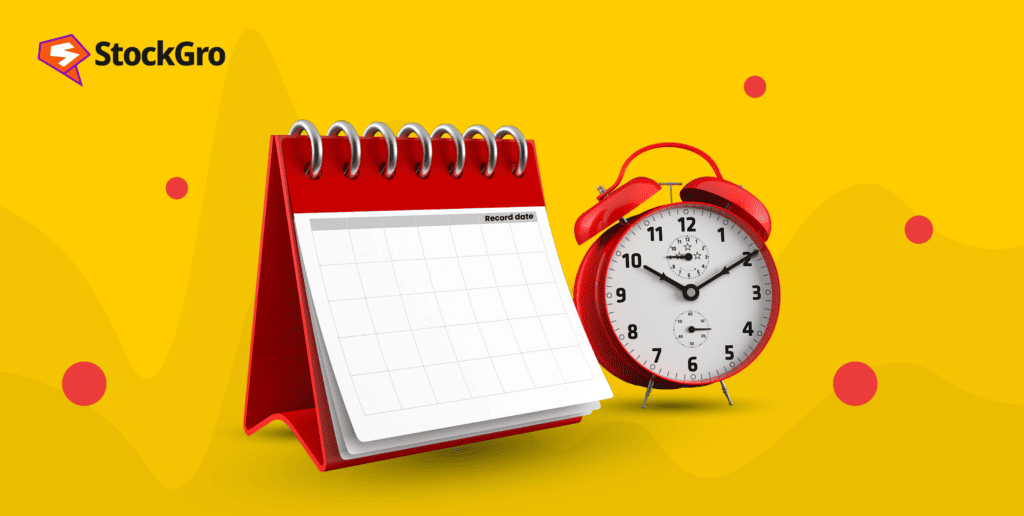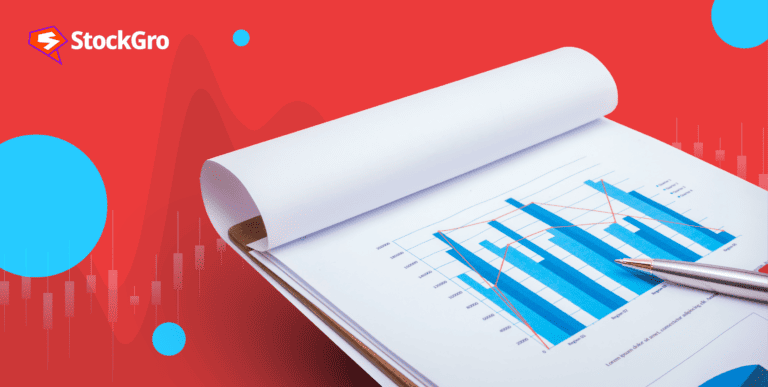
Knowing the difference between the ex-dividend date and the record date is crucial information for dividend investors. Investors must keep their shares until a certain date to be eligible for a dividend payment, which differs from one company to another.
Dividend investing is one method individuals use to invest in the share market for long-term gain. This involves investing in businesses that consistently pay dividends and generate attractive returns. Boost your earnings with the dividend capture strategy.
There are two dates associated with the idea of dividends that most people find puzzling. The following article will discuss ex-date vs. record date to clarify doubts and help you make a profitable buy.
What is the record date?
The ownership of shares in a publicly traded corporation changes every day. It is challenging to precisely notify the investors of the dividend due to the frequent shifts in ownership of shares. In this scenario, the listed company sets a date, and all its stockholders on record are eligible for the dividend on that particular day.
Simply put, the record date is the day a business chooses to pay the dividend. Since the number of people owning shares of publicly traded stock might change at any given moment, determining the record date is essential for keeping track of the corporation’s owners as of that particular day.
For example, suppose a corporation announces that its record date is March 21. In that case, every shareholder whose names are included as of that date in the company’s records will be eligible to collect dividends.
When it comes to record date vs ex dividend date, the importance of the record date lies in simplifying the dividend distribution process for companies. Because shares of publicly traded companies change hands frequently, keeping track of who is entitled to the dividend at any given moment can be complex.
By setting a fixed date—the record date—companies ensure that only the shareholders on record as of that date receive the dividend.
It’s important to note that the record date is set by the company, usually following the dividend announcement. However, the stock exchange determines the ex-dividend date, which typically falls one business day before the record date.
For example, if a company sets its record date for October 25, the ex-dividend date would likely be October 24. Shareholders need to ensure they own the stock before the ex-date to be eligible for dividends.
Adding to the significance of the record date, it’s also a benchmark for stock market activity. Shareholders who wish to benefit from dividends will be monitoring this date closely to ensure they meet the criteria for the payout, affecting stock prices and demand. Ultimately, both the record and ex-dividend dates work together to streamline the dividend distribution process, helping investors strategise their trades effectively.
Also read: A guide to stock dividend
What is an ex dividend date?
The ex-date, also known as the ex-dividend date, is the key date that determines whether or not you will receive a company’s upcoming dividend payment. When you purchase shares on or after the ex-dividend date, you will not be entitled to the dividend, even if the record date is yet to come. Essentially, to qualify for the next dividend, you need to own the shares before the ex-dividend date (ex-date).
The ex-date takes place one business day prior to the record date. On the record date, shareholders who buy shares any day prior to the ex-date will be listed as owners of those units. This implies that they will be qualified for the dividend payout.
However, on the record date, people who buy stocks on or after the ex-date will not be acknowledged as shareholders. Rather, the dividend payment will be sent to the seller, who will remain the record’s owner. The logic behind this is that there’s a time lag in processing share transactions. The stock exchange ensures that only those who purchased shares before the ex-date are eligible for dividends.
For instance, imagine a business declaring a dividend on April 3 with a record date of April 18. The ex-date comes one business day prior to the record date so it would be April 17. You will receive the dividend if you acquire the stock on or before April 16. However, if you buy the stock on or after April 17, you will not be entitled to receive the dividend.
It’s also worth noting that on the ex-date, stock prices typically drop by the dividend amount. This adjustment reflects the fact that the company will soon pay out that portion of its profits. This means the ex-dividend date can have a direct impact on the stock’s market value.
Also read:Dividend Rate vs. Dividend Yield
Ex date vs record date: Explained?
| Record Date | Ex-Dividend Date |
| The day when a business decides who will get its dividend | The date on which an investor loses eligibility for the current dividend process |
| Set by the company’s board of directors | Set by stock exchange rules |
| Typically, one business day after the ex-date | Usually, one business day before the record date |
| Investors need to be shareholders on the record date to receive the dividend | Investors need to be shareholders before the ex-date to receive the dividend |
| Affects the list of shareholders eligible for the dividend | Affects the price and demand of the stock |
Record date vs ex dividend date: stock trading considerations
Investing in the stock market is mostly done for financial gain; for others, it may be a long-term strategy. If you trade equities around the ex-date and record dates, you should be aware that several things might impact the amount of your dividend, regardless of the reason.
Stock prices generally adjust on the ex-dividend date to reflect the upcoming dividend payout. Since the dividend is essentially “priced in” to the stock before the ex-date, once the ex-date hits, the stock’s price often drops by approximately the amount of the dividend.
For example, if a company is set to pay a dividend of ₹5 per share and the stock closes at ₹100 the day before the ex-date, the stock could open around ₹95 on the ex-date, reflecting the dividend payout. This adjustment is crucial for short-term traders and investors looking to capture dividends, as it impacts their returns.
If your goal is to maximize your dividend returns, buying your stocks before the company’s ex-date is the best way to ensure you get your dividend in the current dividend cycle. Dividend policy explores all its types and the critical factors affecting dividend cycle.
In the same way, you may buy stocks at any time, even beyond the ex-date, if you think the prices are excellent and it doesn’t matter whether you get the current cycle payout. This approach is particularly useful for investors who believe the stock price will rebound after the dividend payout.
Investors should also factor in tax implications when trading around these dates. Dividends may be taxed differently depending on whether they qualify as ordinary or qualified dividends. Timing your trades with the ex-date and record date can therefore not only affect your income but also how much of it gets taxed.
Also read: What are interim dividends?
Conclusion
When paying out dividends on stocks, there are two crucial dates: the record date vs ex dividend date. These dates determine whether you are entitled to the company’s dividend, and they significantly impact stock prices, especially around the ex-date.
For dividend investors, timing is key. If you want to collect dividends, buying the stock before the ex-dividend date is essential. Missing this window by even a day means the dividend payout will go to the seller instead. However, for investors who are focused on capital gains rather than dividends, buying after the ex-date can offer an opportunity to purchase the stock at a lower price.

